Political instability and uncertainty are inbuilt in Pakistan’s parliamentary form of democracy. But Prime Minister Imran Khan appears all set to stay at the crease through 2022 and cross the finishing line of his five-year term to become the first politician to perform this feat since the days of Zulfikar Ali Bhutto in the 1970s.
Of course, this forecast is subject to many ifs and buts as accidents, disasters, health issues and scandals emerging out of the blue cannot be factored in. However, going by the trajectory on which the opposition forces — be it the Pakistan Democratic Movement (PDM) and its leading parties, the Pakistan Muslim League-Nawaz (PML-N) and the Pakistan People’s Party (PPP) — are moving against the government, plus all the other challenges and road bumps combined, it can be safely said that Prime Minister Imran Khan will continue to hold the fort till elections take place in the country sometime in 2023. And while Imran Khan is in the saddle, the chances of convicted former premier Nawaz Sharif’s return to Pakistan are remote — given the fact that all the speculations regarding his deal with the military establishment have finally come to naught.
However, this does not mean that the PTI Government will have a smooth sailing. On the domestic front, the government would continue to face many genuine as well as self-created, grave economic and political challenges along with governance issues, which a hostile opposition would try to exploit to the maximum. On the external front, the government would be kept on its toes because of its complicated relations with the United States, open hostilities with India on the eastern border and a troubled Afghanistan on its western front. But none of these challenges are likely to develop into a full-blown crisis and upset the carefully laden applecart or force any of the stakeholders to show their cards.
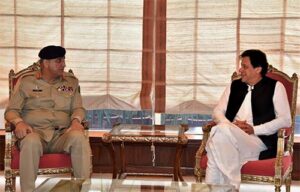
Let’s first take the challenge the PTI Government faces from the opposition in 2022. The PDM and other opposition forces would continue to make aggressive gestures, issue ultimatums and threats about forcing an in-house change or launching an agitation to oust the government. However, none of them would go into a do or die mode, the reason being both the objective and subjective constraints of the opposition parties.
The government has indeed taken a number of highly unpopular steps on the economic front and suffers from an image problem because of its inability to fulfil many election promises and its real or perceived incompetence. However, even now, its support base has not been wiped out and Imran Khan still remains a popular and credible leader, with a following in all four provinces and among all ethnic and religious groups. There is discontent against the government because of high inflation and economic and political instability, but it has not yet reached a level where it would trigger mass unrest on the streets of Pakistan.
Yes, the opposition can bring in the captive crowds to rallies and public meetings, but a sustained mass agitation is not their cup of tea. The opposition’s dilemma increases because its own tried and tested leaders are tainted with allegations of corruption. Both these factors remain a key hindrance in the launch of any broad-based anti-government movement.
All in all, the opposition lacks a programme to mobilise the masses, and a credible leadership and organisational structure to launch protest campaigns.
The opposition also suffers from a lack of trust and unity within its ranks. The division is two-fold. One, among the heavyweight opposition parties such as the PML-N and the PPP; neither of them would allow the other to use its shoulders to climb the ladder of power. The other is within the parties themselves. The PML-N is a prime example of this: generation next of the Sharif family is engaged in a bid to capture the party leadership, resulting in an internal party power struggle. However, Shehbaz Sharif is unlikely to part ways with his older brother, who holds the popular PML-N vote. He would like to enter the electoral arena in 2023 keeping the party intact. Similarly, Nawaz Sharif would also like to keep the party united and bide his time before passing on the mantle of the party’s leadership to his daughter, Maryam Nawaz. Shehbaz, for him, remains merely a stop-gap arrangement.
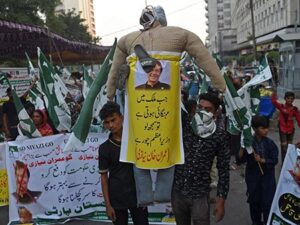
The PPP, which had parted ways with the PDM because of its disagreement on strategy, still does not want the Parliament to end its term prematurely, as this would also affect its government in Sindh. That is the reason for its mantra of in-house change, which Bilawal Bhutto and Co. will not be able to force, not merely because of its unwilling partners but also because they themselves lack the political will to do so. The public outbursts of the PPP are nothing more than posturing.
The senior opposition leadership also knows the risk of upsetting the applecart. An Imran Khan ousted from power prematurely would become a political martyr and prove more ferocious in his attacks in the next election campaign. Additionally, the opposition would not want to set a precedent which may one day come to haunt its own leadership and result in unintended consequences. These may include the ouster of the top leaders from the power equation in the form of the much-speculated national government or any other model, if the current one collapses prematurely.
The second challenge for the PTI Government could have emerged from the infighting among the institutions — the executive versus the army or the executive versus the judiciary. Luckily for the PTI, even in its fourth year in power, at least it has working relations with the institutions, even if they are far from ideal.

Prime Minister Imran Khan’s uncalled-for tiff with the military leadership over the appointment of the ISI chief proved short-lived and is now water under the bridge as the working relations between the two sides remain normal. However, this episode has damaged the perception of both players being on the same page. The page is not torn, but some wrinkles have appeared on it now. However, this shouldn’t be surprising in a country like Pakistan which has flawed elected institutions and suffers from capacity issues of the civilian leadership. Certainly, there are both internal and external issues on which the Prime Minister and the military leadership do not see eye-to-eye, but they remain manageable and have not crossed the point of no return.
However, there are political forces who would want to see the military act against Imran Khan and orchestrate his ouster, as was evident from the statements of former president Asif Ali Zardari, as well as the organised propaganda campaign of a deal between Nawaz Sharif and the military. However, the differences between the civil and military leadership are not of a fundamental nature. Therefore, the desire for Imran Khan’s ouster through some backchannel deal is unlikely to materialise.
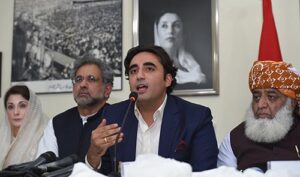
The military leadership would continue to support the current political set-up as the country cannot afford any misadventure and remains in desperate need of at least a semblance of political stability and continuity.
What the opposition hopes to achieve through its brinkmanship and aggressive approach is to ensure its relevance, keep the PTI on the back foot and create some political space for itself in the next general elections.
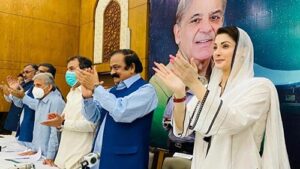
Imran Khan, on his part, will try to go in for some popular measures in the last one-and-a half years in power and perhaps reenergise the accountability campaign against corruption, with the aim of bringing some of the high profile corruption cases against the opposition leaders to a closure, specially focusing on Shehbaz Sharif, who is trying to present himself as an alternate to Imran Khan.
While both the government and the opposition have their eyes fixed on the next general elections, at least in 2022 and part of 2023, Imran Khan’s detractors would have to live with his verbosity on ‘Naya Pakistan,’ ‘Riyasat-e-Madina’ and accountability, as well as bear his sermons on morality and how vulgarity, obscenity and the ‘evil social media’ are corrupting the youth and causing moral decay.
But if Khan is looking to stay in power beyond 2023, then along with his sermons, which are abhorred by most liberals, he would have to improve his game on a war-footing and deliver on at least some of his electoral promises, bring down inflation and revive economic activity. The mighty Khan is still very much in the game, though he appears a bit ruffled and worn-out.
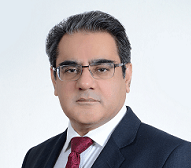
The writer is a senior journalist and managing editor, Narratives.



